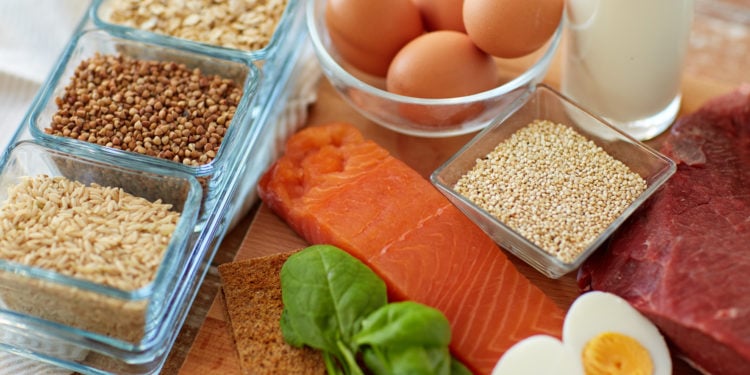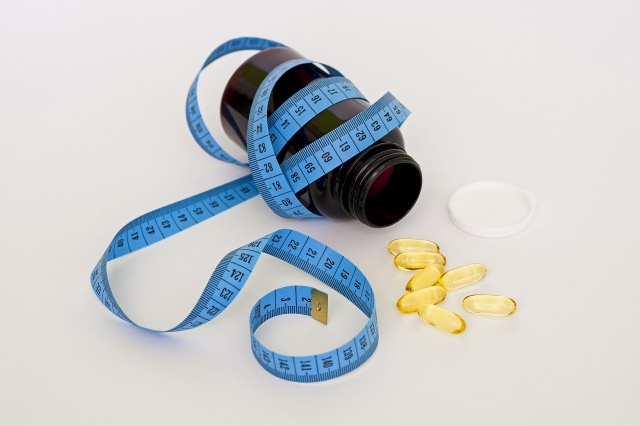You should aim to lose 0.5 to 1 pound per day. This rate is safe and sustainable.
Losing weight can be challenging but manageable with the right approach. Aiming for a daily weight loss of 0. 5 to 1 pound is both safe and effective. This rate helps ensure you don’t lose muscle mass and keeps your metabolism stable.
Quick fixes and extreme diets often lead to short-term results and can harm your health. A balanced diet and regular exercise are key to achieving and maintaining your weight loss goals. Stay hydrated and get adequate sleep to support your efforts. Remember, consistency and patience are crucial for long-term success. Always consult a healthcare professional before starting any weight loss program.

Credit: burnlab.co
Healthy Weight Loss Rate
Understanding the healthy weight loss rate is crucial for long-term success. Losing weight too quickly can be unhealthy. A steady, manageable pace is best. Let’s explore the recommended daily loss and factors that affect weight loss.
Recommended Daily Loss
A safe and realistic goal is losing 1-2 pounds a week. This equals about 0.14-0.29 pounds daily. This pace is sustainable and supports long-term health. Extreme diets or exercise plans can be harmful. Stick to gradual changes for the best results.
Factors Affecting Weight Loss
Several factors can affect your weight loss rate:
- Diet: A balanced diet with fewer calories helps.
- Exercise: Regular physical activity boosts weight loss.
- Metabolism: Your metabolism impacts how quickly you burn calories.
- Sleep: Proper rest is essential for weight management.
- Hydration: Drinking enough water supports weight loss.
Each factor plays a role in your daily weight loss. Monitor and adjust these elements for better results.
| Factor | Impact |
|---|---|
| Diet | Essential for calorie control |
| Exercise | Increases calorie burn |
| Metabolism | Affects calorie burning rate |
| Sleep | Important for overall health |
| Hydration | Supports metabolic processes |

Credit: blog.nasm.org
Dietary Guidelines
Understanding dietary guidelines is essential for healthy weight loss. Your body needs the right nutrients to function well. Let’s explore balanced nutrition and caloric intake.
Balanced Nutrition
A balanced diet is crucial for weight loss. It includes various food groups. Below is a table showing essential food groups:
| Food Group | Examples | Benefits |
|---|---|---|
| Fruits | Apples, Bananas | Rich in vitamins |
| Vegetables | Broccoli, Spinach | High in fiber |
| Proteins | Chicken, Beans | Builds muscles |
| Grains | Oats, Brown rice | Provides energy |
| Dairy | Milk, Yogurt | Strengthens bones |
Caloric Intake
Managing caloric intake helps control weight loss. Here is a simple way to track calories:
- Use a calorie calculator.
- Track daily food intake.
- Choose nutrient-dense foods.
Follow these steps for a healthy calorie count:
- Determine daily calorie needs.
- Create a meal plan.
- Stick to the plan.
Remember, rapid weight loss is unhealthy. Aim for a gradual reduction. This ensures sustainable results.
Exercise Recommendations
Understanding the role of exercise can help in achieving weight loss goals. Regular physical activity boosts metabolism and burns calories. This section provides effective workouts and the importance of consistency.
Effective Workouts
To lose weight daily, choose workouts that burn the most calories. Cardio exercises are excellent for this purpose. Activities like running, cycling, and swimming are great options. These workouts elevate your heart rate, helping you shed pounds.
Strength training is also essential. Lifting weights builds muscle mass, which boosts your metabolism. Muscle burns more calories than fat, even at rest. Combine cardio and strength training for the best results.
Here is a table of effective workouts and their benefits:
| Workout | Calories Burned (per hour) | Benefits |
|---|---|---|
| Running | 600-800 | Improves cardiovascular health, burns fat |
| Cycling | 500-700 | Enhances leg strength, boosts stamina |
| Swimming | 400-600 | Full-body workout, low impact |
| Weight Lifting | 200-400 | Increases muscle mass, enhances metabolism |
Consistency In Routine
Consistency is crucial for weight loss. Following a regular exercise routine ensures steady progress. Set achievable goals and stick to your plan. Consistency helps form healthy habits over time.
Here are some tips for maintaining consistency:
- Set a daily exercise schedule.
- Track your progress with a fitness app.
- Find a workout buddy for motivation.
- Mix up your workouts to keep things interesting.
Remember, small daily efforts add up. Stay committed and watch the weight come off gradually.
Hydration And Its Role
Hydration plays a crucial role in any weight loss journey. Drinking enough water helps the body function properly. It boosts metabolism and aids digestion. Proper hydration also supports muscle function and keeps you energized.
Water Intake
How much water should you drink each day? A common recommendation is 8 glasses of water daily. This equals about 2 liters or half a gallon. However, individual needs may vary. Factors like age, weight, and activity level influence water intake. Here is a simple table to guide you:
| Weight (lbs) | Water Intake (ounces) |
|---|---|
| 100 | 50 |
| 150 | 75 |
| 200 | 100 |
Benefits Of Staying Hydrated
Staying hydrated offers many benefits. Here are some key points:
- Boosts Metabolism: Water helps burn calories faster.
- Reduces Appetite: Drinking water can make you feel full.
- Improves Digestion: Water aids in breaking down food.
- Supports Muscle Function: Hydrated muscles work better.
- Enhances Skin Health: Water keeps skin glowing.
Make water a part of your daily routine. Carry a water bottle with you. Drink water before meals. Replace sugary drinks with water. Staying hydrated will help you in your weight loss journey.
Monitoring Progress
Tracking your weight loss journey is important. It helps you stay motivated and focused. Monitoring progress ensures you are on the right path. Below are some effective ways to monitor your weight loss progress.
Tracking Methods
There are many ways to track your weight loss. Here are some effective methods:
- Weighing Scale: Use a digital scale for accuracy. Weigh yourself daily, at the same time.
- Body Measurements: Measure your waist, hips, and thighs. Track changes in inches lost.
- Food Diary: Keep a record of what you eat. Track calories and nutrients.
- Exercise Log: Note your daily physical activities. Record the type, duration, and intensity.
Setting Realistic Goals
Setting realistic goals is crucial for success. Here are some tips:
- Start Small: Aim for losing 0.5 to 1 pound daily. This is a safe and achievable goal.
- Be Specific: Set clear, detailed goals. For example, “Lose 5 pounds in one week.”
- Stay Flexible: Adjust your goals as needed. If you hit a plateau, don’t get discouraged.
- Celebrate Milestones: Reward yourself for achieving small goals. This keeps you motivated.
| Goal | Description | Tips |
|---|---|---|
| Lose 0.5 pounds daily | A safe and achievable goal | Monitor your diet and exercise |
| Measure waist weekly | Track inches lost | Use a tape measure |
| Record food intake | Track calories and nutrients | Use a food diary app |
Common Pitfalls
Many people want to lose weight quickly. This leads to common pitfalls. Knowing these can help you stay on track. Avoid mistakes and succeed in your weight loss journey.
Avoiding Extreme Diets
Extreme diets can be tempting. They promise fast results. But they are often unhealthy and unsustainable. You may lose weight quickly, but it won’t last. Your body needs a balanced diet to stay healthy.
Extreme diets often cut out entire food groups. This can lead to nutrient deficiencies. Your body needs a variety of foods. Include fruits, vegetables, proteins, and grains in your diet.
Instead of extreme diets, opt for moderation. Eat smaller portions and make healthier choices. This will help you lose weight in a healthy way. Consistency is key to long-term success.
Dealing With Plateaus
Weight loss can be frustrating. You may hit a plateau. This is normal. Your body adjusts to new routines.
To overcome plateaus, change your workout routine. Add new exercises or increase intensity. This can help jumpstart weight loss again.
Also, check your diet. You may need to adjust your calorie intake. Eat more protein and less sugar. Small changes can make a big difference.
Here are some tips to deal with plateaus:
- Track your progress
- Stay hydrated
- Get enough sleep
- Stay positive and patient
Remember, weight loss is a journey. Patience and persistence are vital. Avoid common pitfalls and stay focused on your goals.
Expert Advice
When considering weight loss, it’s crucial to seek expert advice. Professionals can guide you safely and effectively. Let’s explore the importance of consulting professionals and creating personalized plans.
Consulting Professionals
Consulting professionals is vital for healthy weight loss. Experts like doctors and nutritionists can help. They provide accurate information and monitor progress. This ensures safety and effectiveness. Here are some key benefits:
- Accurate assessment of your current health status.
- Personalized advice tailored to your body’s needs.
- Continuous monitoring to avoid health risks.
It’s important to schedule regular check-ups. This helps track your progress. It also helps identify any potential issues early. Here’s a simple table to illustrate the benefits:
| Benefit | Description |
|---|---|
| Accurate Assessment | Understand your health status and needs. |
| Personalized Advice | Get tailored recommendations for your body. |
| Continuous Monitoring | Ensure safe and effective weight loss. |
Personalized Plans
Creating a personalized plan is crucial. Each person’s body is unique. What works for one might not work for another. Personalized plans consider your specific needs. This includes your diet, exercise routine, and lifestyle. Here are the steps to create a personalized plan:
- Consult a professional to assess your health.
- Set realistic and achievable goals.
- Design a diet that suits your preferences and needs.
- Create an exercise routine that’s enjoyable and effective.
- Regularly review and adjust the plan as needed.
Personalized plans ensure you stay motivated. They also help you achieve your goals safely. It’s important to remember that weight loss is a journey. Patience and persistence are key. Always seek expert advice to stay on track.
Credit: www.quora.com
Frequently Asked Questions
What Is Acceptable Daily Weight Loss?
Acceptable daily weight loss is about 0. 25 to 0. 5 pounds. This ensures healthy and sustainable progress. Rapid weight loss can be harmful.
Is Losing 2 Pounds A Week Healthy?
Yes, losing 2 pounds a week is generally healthy. It aligns with many health guidelines for sustainable weight loss.
How Much Weight Loss Is Concerning Daily?
Losing more than 1-2 pounds daily is concerning. Rapid weight loss can indicate underlying health issues. Seek medical advice.
Is It Realistic To Lose 10 Pounds In A Month?
Yes, losing 10 pounds in a month is realistic. It requires a balanced diet, regular exercise, and consistency.
Conclusion
Losing weight daily should be approached with caution. Aim for a healthy, sustainable rate. Consult healthcare professionals for personalized advice. Remember, small, consistent changes lead to lasting results. Balance diet, exercise, and rest for the best outcome. Stay committed to your goals and celebrate progress.
Your health journey is unique and valuable.


